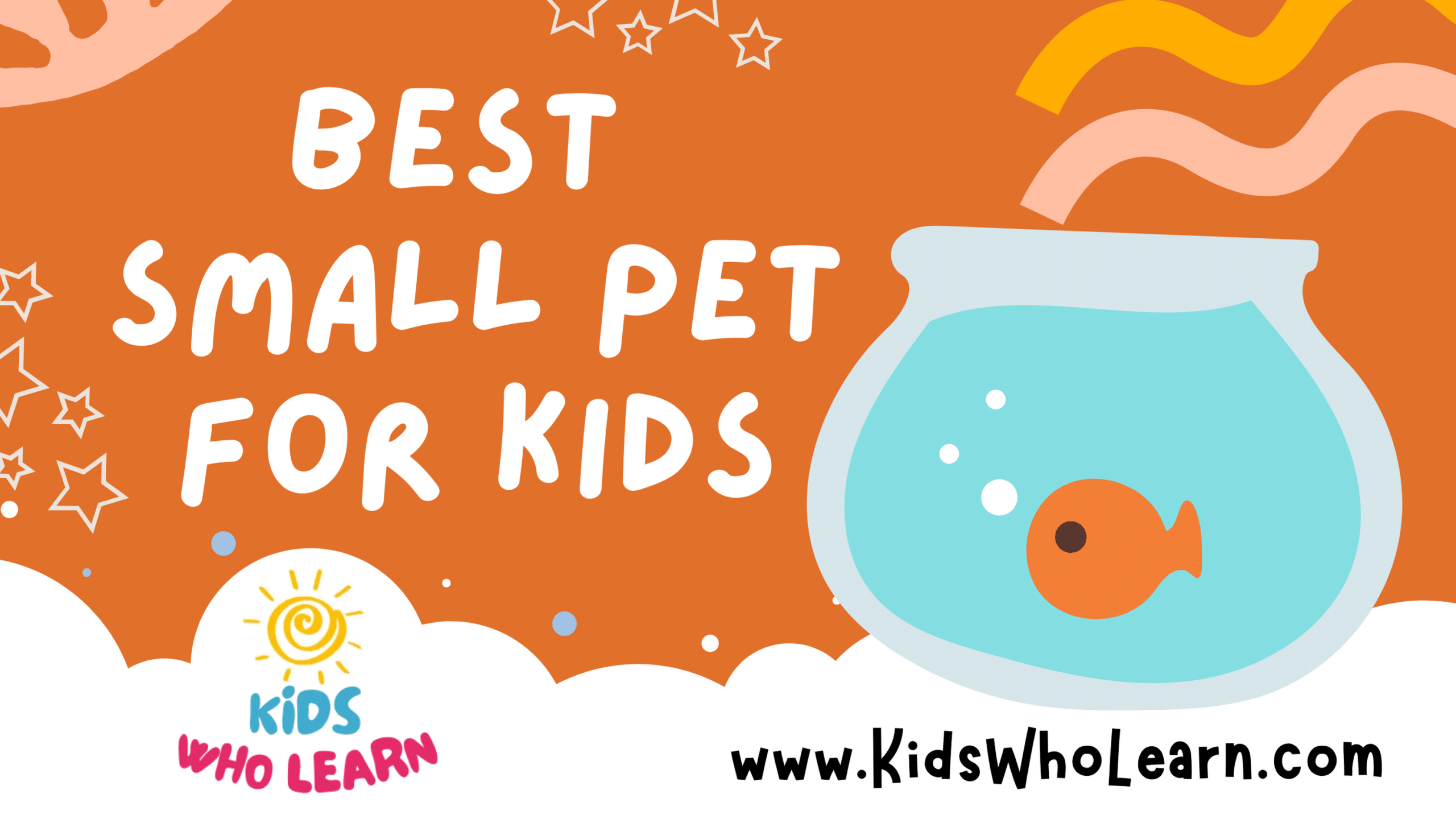Selecting the best small pet for your child involves understanding both the child’s needs and the pet’s characteristics. A critical aspect is the pet’s responsiveness to children. Younger kids often benefit more from interactive pets that can engage in play and display affection, while older children might appreciate a pet that requires more complex care or offers educational value.
The space available in your home and the dynamics of your family lifestyle also play significant roles in choosing an appropriate pet. A small, low-maintenance animal may be preferable for families living in apartments or homes with limited outdoor space. Additionally, the life expectancy of the pet should be considered to ensure that your child is ready for the long-term commitment that comes with pet ownership.
Key Takeaways
- Responsiveness and age-appropriate interaction are important in choosing a pet for children.
- Consideration of living space and family lifestyle is crucial in selecting a suitable small pet.
- Understanding the pet’s lifespan helps prepare for the long-term commitment of pet ownership.
Understanding Pet Responsiveness to Kids
Choosing the right pet for kids requires understanding how animals respond to young handlers. Selecting a pet with a suitable temperament, intelligence level, and energy can create a harmonious relationship between your child and their new companion.
Significance of Temperament in Pets
Temperament is crucial when selecting a pet for children. Look for animals that are typically friendly and have a history of being good with young children. For instance, Guinea pigs are known for their calm nature, while rabbits can also be gentle but may require a bit more patience. Both animals need social interaction and offer affection, yet they are generally not aggressive, making them suitable for children who are learning the basics of pet care.
- Affectionate: Pets that enjoy human contact
- Example: Guinea pigs often enjoy being held.
- Patient: Animals that tolerate handling well
- Rabbits, although skittish, can learn to enjoy gentle interactions.
The Role of Pet Intelligence and Training
Pets with higher levels of intelligence might require more attention and mental stimulation; however, they can be incredibly rewarding for kids. For example, rats are highly intelligent; they are capable of learning tricks and commands which can provide a sense of accomplishment and responsibility for children. Additionally, the intelligence of animals like rats often makes them more responsive to training and can help with socialization practices.
- Attention: Necessary for pets that require mental stimulation
- Rats enjoy puzzle toys and can engage in play that challenges their intellect.
- Training: Opportunities to bond and teach
- Consistent interaction with rats can lead to a strong bond between pet and child.
Catering to the Energy Levels of Children and Pets
The activity level of the pet should match that of your child. Young children often have high energy and might do well with playful pets. Hamsters, for example, are active during the night and can be entertaining to watch, but may not interact with kids during peak daytime hours. Consider a small dog breed if your child is active and ready to invest time in a pet that requires more physical exercise and direct playtime.
- Playful: Pets that can keep up with active children
- Small dog breeds like Beagles are often energetic and playful.
- Attention: The need for involvement with high-energy pets
- Active pets like small dogs require regular play sessions and attention from your child.
Evaluating the Space and Lifestyle Constraints
When considering a small pet for your children, it’s imperative to assess both the physical space available and how a pet fits into your family’s lifestyle.
The Importance of Size and Livability
Space is a crucial factor in choosing the right pet. If you live in an apartment, limitations on floor space mean that small pets that require minimal room are ideal. For instance, a small fish tank or a terrarium for a reptile can fit comfortably in tight spaces. Hamsters or gerbils, which thrive in compact habitats like cages, can also adapt to smaller living areas.
Lifestyle Considerations for Busy Families
Lifestyle meshes with pet ownership in several key ways. Your family’s schedule is important—regular feeding, cleaning, and interaction times must align with your lifestyle. If your family is consistently on the move, consider pets like betta fish or snails that demand less daily maintenance. For balance, you’ll want to select a pet whose care requirements do not overextend your family’s capacity to provide a stable, nurturing environment. Small pets, while often requiring less time and space than larger animals, still necessitate a certain level of commitment. Here’s how a busy family’s weekly routine might look:
- Feeding: Daily, quick—consider a timed feeder for consistency.
- Cleaning: Weekly, can be scheduled around family activities.
- Interaction: Varies, but short, frequent interactions are beneficial.
Nurturing Through Care and Maintenance
Selecting a small pet for your child involves understanding the responsibility of nurturing through consistent care and maintenance. This includes daily rituals, recognizing health and nutritional needs, and ensuring a clean and safe environment for the pet.
Daily Care Rituals and Time Commitments
Regular daily care is essential for the wellbeing of small pets. Your child’s routine should include:
- Feeding: Provide the right quantity of food at the same times each day to establish a consistent feeding schedule.
- Exercise: Ensure appropriate exercise for the specific pet, which could involve handling, playing outside the cage, or providing exercise equipment inside the habitat.
- Observation: Spend time observing the pet for any changes in behavior or appearance that might indicate health issues.
Adult supervision is advised to guide children in their daily care activities and responsibilities.
Health and Nutritional Needs of Small Pets
Understanding the health and nutritional needs of small pets is crucial for their longevity and happiness. Be mindful of:
- Diet: A balanced diet specific to the pet’s species is paramount. For example, guinea pigs require vitamin C in their diet, while rabbits need a high fiber diet with plenty of hay.
- Regular Check-ups: Yearly visits to a veterinarian specializing in small animals can prevent or detect early signs of illness.
- Allergies and Sensitivities: Be aware of any signs of allergies in both the pet and child. Adjust the environment or diet accordingly.
Sanitation, Safety, and Disease Prevention
Maintaining a clean environment prevents disease and promotes safety. Include these practices in your routine:
- Cleaning: Regularly clean the pet’s habitat, dishes, and toys to prevent bacteria build-up.
- Disease Prevention: Wash hands after handling pets and their habitats, especially for species that carry risks like salmonella (e.g., reptiles).
- Safety Measures: Keep the pet’s area free from sharp objects or small items that might be ingested, and always supervise interactions between the pet and young children.
Proper sanitation is non-negotiable to ensure the health of both your pet and family.
Understanding Pet Lifespan and Long-Term Commitment
When selecting a small pet for children, it’s important to consider the pet’s expected lifespan and the long-term commitment involved. Different pets have varying lifespans, and your commitment may last from a few years to potentially decades.
Common small pets and their average lifespans:
- Hamsters: 2-3 years
- Guinea Pigs: 4-8 years
- Rabbits: 8-12 years
- Gerbils: 2-4 years
- Fish: 2-5 years (varies widely by species)
- Birds (e.g., Canaries, Parakeets): 5-15 years
When you bring a pet into your home, you are accepting the responsibility for its health and well-being, which includes caring for it throughout its entire life. This means regular feeding, cleaning, medical check-ups, and social interaction. Your level of responsibility grows with the longevity of the pet you choose.
Considerations for pet ownership:
- Are you prepared to provide daily care for your pet for its entire life?
- Can you afford potential long-term costs, such as veterinary care and special dietary needs?
- Is your living situation stable and suitable for a pet over several years?
Understanding that longer-lived pets require a more prolonged commitment can help you make an informed decision for your family. Choosing a pet with a shorter lifespan may be more appropriate if you are uncertain about your long-term living situation or ability to care for a pet. Remember, pet ownership is a significant commitment that should align with your ability to provide a stable, loving home for the duration of the pet’s life.
Types of Pets Ideal for Kids
Selecting a pet for your child involves considering ease of care, size, and the compatibility with your family’s lifestyle. Choose a pet that aligns with your child’s age and your ability to supervise their interactions.
Small Mammals and Rodents
Rats – Highly intelligent and sociable, rats are great for older children who can handle them gently.
Rabbits – Need space to hop and are sociable. They’re best suited for children who understand the need for careful handling.
Hamsters – Nocturnal and easy to care for, these pets are suitable for kids who will respect their sleep cycle.
Guinea Pigs – Gentle and vocal, guinea pigs thrive on interaction and regular, gentle handling.
Gerbils – Active and entertaining, they’re small and typically less prone to biting.
Mice – Small and quick, they require less space but are quite delicate and suited to careful handlers.
Chinchillas – Require a cool, dry environment and a dust bath, they are soft and need gentle handling.
Hedgehogs – Nocturnal and require a special diet and habitat, they are for more mature kids who can handle their spines carefully.
Avians: Birds that Fit in Families
Birds – Can range from small, low-maintenance types like budgies and canaries to larger parrots that need more interaction and space. Birds bond with their owners but may require substantial socialization.
Aquatic Pets: An Alternative Choice
Fish – Require a stable tank environment and regular maintenance. They are an ideal choice to teach children about pet care without the need for physical interaction.
Reptiles and Exotics: A Unique Responsibility
Reptiles – Including turtles, snakes, and lizards, they’re fascinating but need specific habitats. They’re suitable for families willing to invest in their unique care requirements.
Exotic – Pets like sugar gliders or tarantulas are intriguing but demand a significant commitment to meet their environmental and dietary needs.
Specific Pet Recommendations by Type
When choosing a pet for your children, consider temperament, care requirements, and size. These recommendations will help you select a suitable companion for your family.
Best Dog Breeds for Children
Beagle: Known for its friendly demeanor, the Beagle makes a great companion for active children.
Labrador Retriever: A loyal and gentle dog, Labs are patient and great with kids of all ages.
Rabbits: Furry Friends with Personality
Holland Lop: Small in size with a sweet nature, perfect for kids who will handle them gently.
Lionhead Rabbit: Recognizable by their fluffy manes, these rabbits are friendly and sociable.
Low-Maintenance Pets for Younger Children
- Guinea Pig: Cuddly and relatively easy to care for, making them ideal for younger children.
- Betta Fish: Requires minimal space and maintenance, a serene pet option.
Unique Considerations for Exotic Pet Care
Rat: Intelligent and affectionate rodents that enjoy social interaction and can be trained for tricks. However, they require a specific habitat and diet.
When selecting any pet, ensure you’re familiar with the care specifics and that you’re ready for the long-term commitment.
Engaging Activities and Strengthening Bonds
Building a strong bond with a small pet involves activities that are both enjoyable and beneficial to their well-being. Interactive play and structured educational opportunities can significantly enhance the relationship between you and your pet.
Interactive Play and Exercise
Toys and games are essential for stimulating your pet’s mind and body. Consider the following for an engaging experience:
- Exercise Wheels: Small rodents, like hamsters, benefit greatly from the physical activity provided by exercise wheels.
- Feather Wands: Birds enjoy playful interaction with feather wands, which mimic the movement of prey.
- Mazes and Tunnels: Create a maze or a system of tunnels for your pet to navigate. This encourages problem-solving and satisfies their natural instincts.
Interactive play not only keeps your pet fit but also provides a foundation for training in tricks and obedience, fostering respect and affection in your relationship.
Educational Opportunities in Pet Care
Understanding the responsibility of pet ownership can be educational for children. Engage in the following activities:
- Feeding Schedule: Teach your child the importance of a regular feeding schedule, instilling responsibility and compassion.
- Health Checks: Show them how to perform simple health checks on their pet, which promotes respect for the animal’s well-being.
- Grooming Practices: Regular grooming sessions can become a bonding ritual, teaching your child about caring for another living being.
Through these educational pet care activities, you not only give your pet the necessary attention for a healthy life, but you also cultivate a nurturing environment where bonding can flourish.
Choosing Your Child’s First Pet
Selecting the first pet for your child hinges on understanding their maturity level and interests. This can guide you toward a suitable starter pet that fits well with your family’s lifestyle.
Identifying a Starter Pet Based on Child’s Age and Maturity
When considering pets for young children, factor in your child’s age and how responsible they can be. For kids under six, opt for low-maintenance pets like betta fish or hermit crabs. These creatures require minimal handling, which suits the developing motor skills of younger children.
For kids aged seven to ten, consider small mammals like guinea pigs or hamsters. They are cuddly and have a sweet disposition, but remember that small pets like these can also be somewhat agile. These animals can provide a soft, hands-on experience but also necessitate a certain level of care, teaching your child basic responsibility.
Determining the Right Pet Based on Child’s Interests
Align your pet choice with your child’s interests for a fulfilling pet ownership experience. If your child has a fondness for cuddly and fluffy creatures, a rabbit might be an ideal pet. They are typically gentle and can bond with their owners, yet they require regular, careful handling and space to move around.
Conversely, if your child is intrigued by the natural world and less interested in physical affection from a pet, consider ant farms or a small aquarium. These options provide an educational glimpse into different ecosystems without the need for direct interaction.
Here’s a quick guide to match pets with interests and care requirements:
| Interest | Suggested Pets | Care Level |
|---|---|---|
| Low Maintenance | Betta Fish, Hermit Crabs | Minimal |
| Cuddly & Interactive | Guinea Pigs, Rabbits | Moderate |
| Observational Learning | Ant Farms, Small Aquariums | Moderate to High |
By weighing your child’s age, maturity, and interests, you’ll be able to choose a pet that brings joy and valuable lessons into your home.
Conclusion: Making an Informed Decision
When selecting the best small pet for your child, thorough research is crucial. Understand each animal’s needs, lifespan, and behavior to ensure compatibility with your child’s age and your family’s lifestyle.
Key considerations include:
- Lifespan: Shorter lifespan pets may be easier commitments.
- Care Requirements: Some pets demand more time and effort.
- Temperament: Gentle and calm pets are often suitable for kids.
- Space: Ensure ample room for your pet to live comfortably.
- Allergies: Check for potential allergies within your family.
Make an informed choice by comparing the traits of potential pets:
| Criteria | Consideration |
|---|---|
| Maintenance | Can you invest the time for care and attention? |
| Size | Is your living space adequate for the pet’s needs? |
| Interactivity | Is the pet sociable and kid-friendly? |
| Cost | Are you prepared for financial requirements? |
Bear in mind that the best pets for kids are those that can enrich the family’s experience while still being manageable for the child under adult supervision. When you decide, remember you are committing to the well-being of a living creature. Choose wisely to ensure a positive experience for both your child and the pet.
Frequently Asked Questions
Choosing the right small pet for your child involves considering maintenance level, temperament, and the child’s specific needs. This section addresses common questions to guide you in making an informed decision.
What are some low-maintenance pets suitable for children?
Low-maintenance pets for children include betta fish, guinea pigs, and hamsters. These animals require minimal grooming and can adapt well to living in smaller spaces.
Which small pets are known for being particularly friendly to kids?
Rabbits and guinea pigs are known for their friendly nature towards kids. They are generally sociable and can enjoy interaction when handled gently.
What pet options are recommended for children with ADHD?
Pets like dogs, especially those that can be trained for therapy, or even smaller animals like hamsters, can provide a calming presence and a sense of responsibility for children with ADHD.
Which animals make suitable first pets for young children around 9 to 11 years old?
For children aged 9 to 11, consider pets like gerbils, guinea pigs, or small breeds of rabbits, as they can be easier to handle and take care of, fostering a sense of responsibility.
What pets might help in reducing anxiety in children?
Pets such as cats, dogs, and even small animals like rabbits can help reduce anxiety in children by providing companionship and a comforting presence.
How do you choose an appropriate pet for a 7-year-old?
When choosing a pet for a 7-year-old, look for animals that are known to be gentle and easy to handle, such as guinea pigs or small breeds of dogs that match the child’s energy level and are less likely to overwhelm them.











